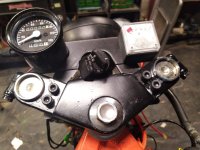jonescg
100 MW
By the way, the nickel I had any luck with was 0.15 mm. 0.20 mm was too thick, at least for the Sunkko anyway. Hope it works out for you!
Once I added the second transformer, I had no problem with .2mm nickel + the thin copper tape you suggested. Need to fine tune the settings, but I made several good connections on scrap cells. Tearing them off tore thee nickel before it tore the weldBy the way, the nickel I had any luck with was 0.15 mm. 0.20 mm was too thick, at least for the Sunkko anyway. Hope it works out for you!
At least I just have to make through-holes in the busbars, because the plastic mounts behind the busbars will have the nut to grab onto each screw. I won't have to individually tap and thread 120 holes, like it did in the above video. Also, I wasn't sure about the longevity of copper threads anyway.FWIW, I feel for you; I am about to rebuild one of my 28-cell EIG packs for the lawnmower from a 14s2p to a 28s1p, and I only have 2p busbars...so I have to take the braid off some old RG75 cable, cut it into 3" lengths, and crimp that into two eyelets each to bolt each cell to the next.
Or, flatten the braid out and solder the ends, then drill them to directly bolt to the cells...
Nothing like the amount of connections you've got to deal with, but I'm not looking forward to it. (but when I'm done the pack will be half the weight so the mower will be a lot easier to use).
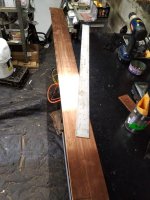
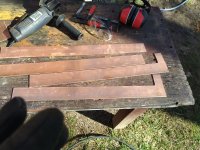

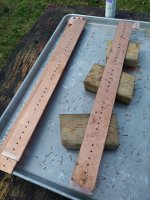
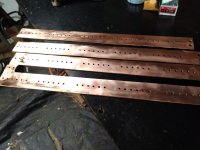
Thank you!Looking downright Sexy there sir!
Just and angle grinder with a cutoff wheel, by hand. I designed and printed a centerpoint finder first. Since wherever the piece of copper came from was factory produced, it had an outside width of 109mm all the way down. My print simply bracketed the long piece with a hole in the exact center, and I used that to scratch a line with a scribe (you can kind of see it in the first pic).whatever you used to cut those, when you are done, would ya mind dropping by? I have a bugger of a time cutting a straight line longer than the 12" guillotine blade on my cutter....
If the bend radius is your restriction you could just double up the 18AWG to be equivalent to 16AWG or triple it to get close to the 14AWG you intended to use. It is quite common to see double/triple wire connections on compact speed controllers like VESC. With the wires terminating into such hefty busbars I'm confident heating won't be an issue, likewise for voltage drop which would be neligible on such a short run.Can someone double check my ampacity esimation? On the battery pack, on the cells on the end, a single short length of wire will be going from each cell to the busbar, and connecting to the busbar via a ring terminal. Only about 1.5 inches max, and it needs to make a rough 90 degreed bend. I had originally planned on 14awg. I just tried it out, and it's too stiff for such a short length.
I have lots of 18awg that I can use. Is that going to work? Each cell is capable of 10A continuous, so each 1.5inch length of wire needs to be able to carry the same 10A, with minimal or no voltage sag. Various ampacity charts differ on how many amps wire can carry. If you use Matador's chart, which a lot of people on the forum seem to use, it suggests that 18awg copper can conservatively handle 14-15 amps. So it seems like 18awg stranded copper should work...
Or am I going to need to purchase some 16awg, which I do not currently have on hand?
Thank you, appreciate your input. I was considering doubling up 18awg as well, and decided not to for two reasons. First was labor: I need to premake and presolder 120 of these connections, which will be nickel strip soldered to wire, other end of wire with a ring terminal. It's going to be finicky work as it is, stripping two ends of tiny 1.5inch wires 120 times, and I didn't want to make it 240 times, or 360 times. Second was aesthetics, as my battery will be visible through clear polycarbonate. While I do have a bunch of 18awg, it would have been several different colors.If the bend radius is your restriction you could just double up the 18AWG to be equivalent to 16AWG or triple it to get close to the 14AWG you intended to use. It is quite common to see double/triple wire connections on compact speed controllers like VESC. With the wires terminating into such hefty busbars I'm confident heating won't be an issue, likewise for voltage drop which would be neligible on such a short run.
It think 2 x 18AWG would be sufficient. 18AWG is only .82mm2 for a total of 24.5mm2 across the 30P connection. Not quite enough for 300A continous although you won't be able to use the 300A for more than a minute or two at a time.
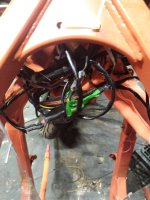
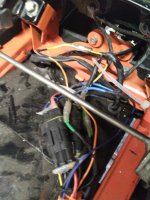
I did that for the SB Cruiser...but then I kept experimenting, and eventually, well....And when I do, I will make a wiring harness for it. All of the wires will be exactly the same length. All the wiring paths will be tidy, with no excess slack at the ends. One day, I will successfully plan a harness that will have all of the connections tidy and we'll organized, and there will be no huge tangle of various connectors that I have to ball up and hide somewhere. One day...
